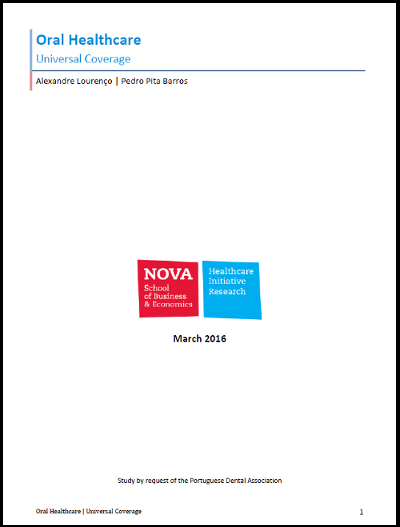Executive Summary
When it comes to indicators for oral health outcomes, the Portuguese population fares below European average. Different sources of information point to the same reality: the existence of a need for oral health care services, of different natures, that is not being met. Financial constraints are one of the most important reasons, if not the most important, preventing better health standards in this area.
Despite the existence of qualified human resources, Portuguese citizens face difficult financial barriers in accessing oral healthcare services, due to the fact that they often have to cover all of their treatment costs. This affects both lower-income families and high-income families alike, who in many cases have no choice but to cover catastrophic expenses when accessing oral healthcare services. Naturally, this financial barrier leads lower-income families to forgo these types of services, a situation that compromises their basic right to healthcare.
Aspects related to illness protection and financial constraints in accessing healthcare services are among the reasons that justify government intervention through healthcare public policy. This leads us to believe that there is room for improvement in the oral health outcomes of the Portuguese population. We analyse alternative possibilities for this improvement, by looking at four different scenarios: A) keeping the current situation; B) increasing public coverage with public provision; C) increasing public coverage with private provision; D) increasing private coverage (insurance) with private provision. Of all these scenarios, increasing public coverage with public provision or with private provision deserve closer attention due to their higher feasibility. The importance of preserving the basic right of access to healthcare led us to exclude the perpetuation of the current situation beforehand.
In addition to this analysis, we further develop a possible layout for a future national network of oral healthcare services, as well as a model for its implementation, monitoring and evaluation.
